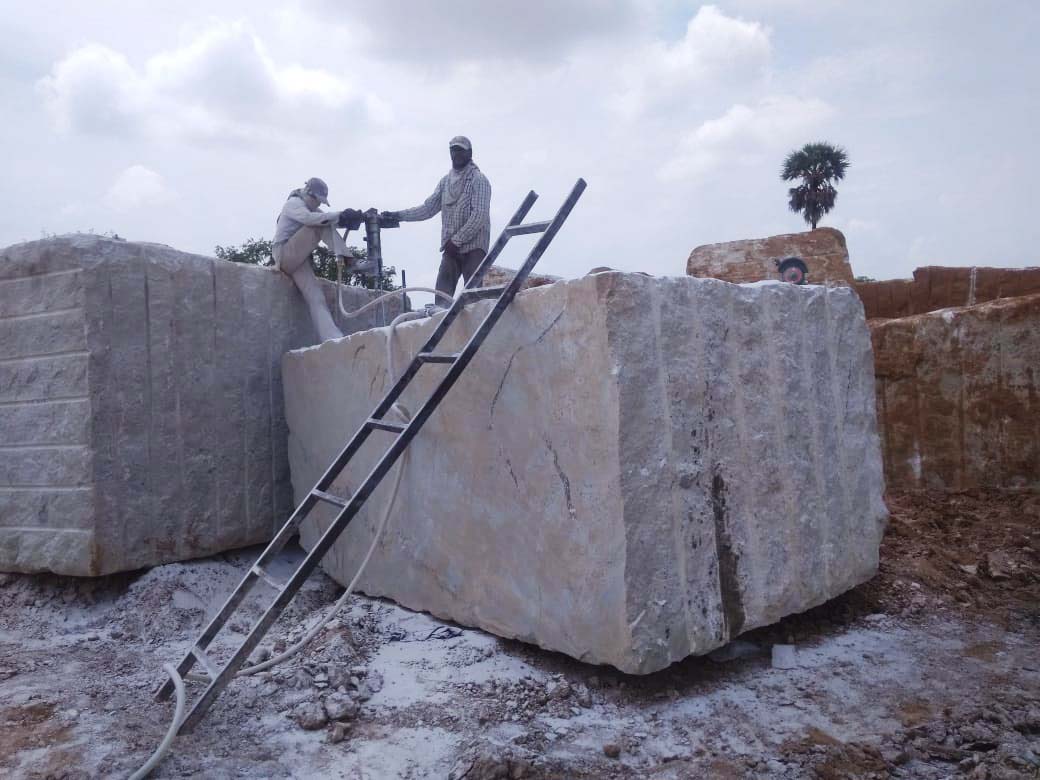Unveiling the Mysteries of Granite Quarrying: Where Strength and Sophistication Meet
The globe of granite quarrying is a realm where the raw stamina of nature assembles with human virtuosity to create structures that stand the examination of time with an air of style. From the depths of quarries to the careful sprucing up in workshops, the process of transforming granite into architectural wonders is an intricate dancing of tradition and development. As we peer right into the midsts of this old craft, we start to uncover the hidden complexities that form the really significance of our constructed environment.
The Origins of Granite Quarrying
In the annals of architectural history, the beginnings of granite quarrying are shrouded in a tapestry of old workmanship and geological wonders. Going back to old Egypt and Mesopotamia, the removal of granite from quarries noted the start of a trip that would at some point bring about the production of several of the world's most famous frameworks.
Granite quarrying's origins can be mapped to the skilled artisans who recognized the rock's resilience and aesthetic appeal. Through a mix of primitive devices and large resolution, these very early quarry employees discovered granite blocks that would become the foundation of worlds.
As people progressed, so did the methods of quarrying granite. The Romans, renowned for their engineering prowess, created innovative techniques for drawing out granite to build monuments, holy places, and roadways that stood the test of time.
The legacy of these old quarrying methods remains to form contemporary architecture, with granite continuing to be an icon of stamina and sophistication in building projects around the world. (granite quarries in south africa)
Devices of the Quarrying Trade
The evolution of granite quarrying strategies from old human beings to contemporary times highlights the vital role played by the tools of the quarrying sell forming the sector's methods. In old times, quarrying devices were basic, frequently being composed of blades, hammers, and wedges made from materials like bronze or iron. These devices required substantial manpower and time to remove granite blocks from quarries.

Furthermore, the introduction of pneumatic tools and high-powered machinery has considerably decreased the physical labor needed in quarrying operations, improving worker safety and efficiency. As the quarrying industry remains to innovate, the devices of the profession stay at the leading edge of driving development and shaping the future of granite extraction.
Extracting Blocks of Granite
Using precision equipment and advanced strategies, the extraction of granite blocks from quarries has actually ended up being a sophisticated process in the modern quarrying sector. Controlled blowing up methods are after that utilized to damage apart the granite into workable sections.

Polishing and Finishing Strategies
To attain a perfect surface area on granite blocks, knowledgeable artisans employ a collection of precise sprucing up and completing techniques. After the first extraction and shaping processes, the granite blocks undertake a thorough sprucing up phase to improve their natural elegance and longevity. why not try this out One typical technique made use of in polishing granite is ruby abrasion, where industrial diamonds are utilized to grind and polish the rock to a smooth surface. This procedure not only develops a lustrous surface area but additionally guarantees harmony in color and structure across the granite block.
In addition to polishing, finishing strategies are used to more fine-tune the granite's look. By very carefully choosing and applying these polishing and finishing techniques, craftsmens can transform raw granite obstructs into exquisite pieces that display both stamina and style.

Environmental Effect and Sustainability
With the growing focus on environmental consciousness in the industry, granite quarrying techniques are significantly scrutinized for their effect on natural sources and resource lasting sustainability. In addition, the transportation of granite from quarries to processing centers generates carbon emissions, further adding to environmental destruction.
To minimize these influences and make certain sustainability in granite quarrying, industry stakeholders are adopting different measures. Implementing sophisticated innovations to lower energy consumption and water usage, reclaiming quarried land for environmental repair, and advertising liable sourcing techniques are some methods being used. Qualifications such as the Woodland Stewardship Council (FSC) and the Management in Energy and Environmental Style (LEED) assistance customers recognize ecologically friendly granite products.
Verdict
Finally, granite quarrying is a procedure that requires specialized tools and techniques to remove blocks of granite and brighten them to a high level of coating. While the environmental impact of quarrying can be considerable, efforts are being made to boost sustainability techniques in the sector. On the whole, granite quarrying is a fragile equilibrium in between utilizing the toughness and beauty of this all-natural rock while decreasing its influence on the atmosphere.